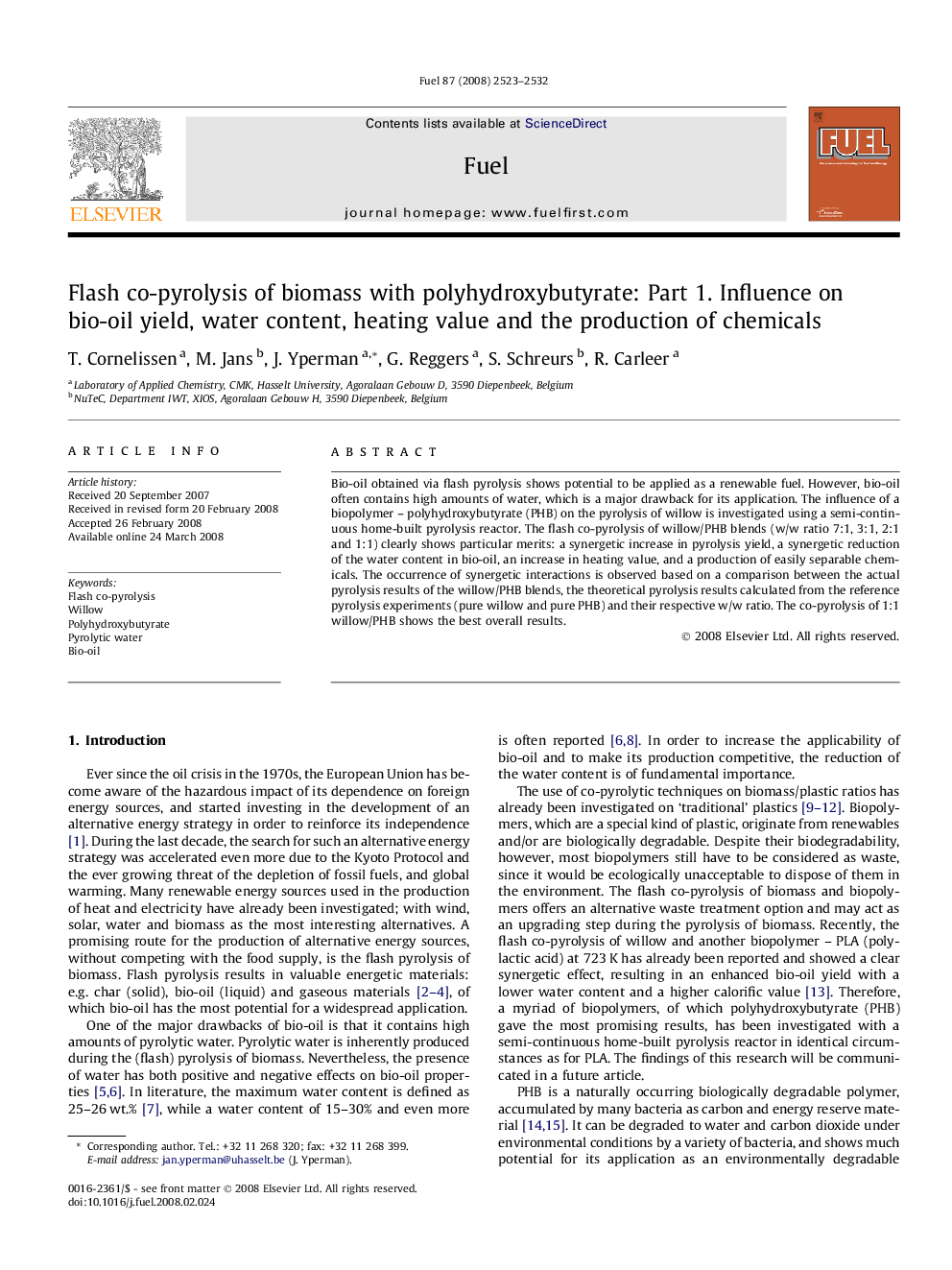| Article ID | Journal | Published Year | Pages | File Type |
|---|---|---|---|---|
| 207453 | Fuel | 2008 | 10 Pages |
Bio-oil obtained via flash pyrolysis shows potential to be applied as a renewable fuel. However, bio-oil often contains high amounts of water, which is a major drawback for its application. The influence of a biopolymer – polyhydroxybutyrate (PHB) on the pyrolysis of willow is investigated using a semi-continuous home-built pyrolysis reactor. The flash co-pyrolysis of willow/PHB blends (w/w ratio 7:1, 3:1, 2:1 and 1:1) clearly shows particular merits: a synergetic increase in pyrolysis yield, a synergetic reduction of the water content in bio-oil, an increase in heating value, and a production of easily separable chemicals. The occurrence of synergetic interactions is observed based on a comparison between the actual pyrolysis results of the willow/PHB blends, the theoretical pyrolysis results calculated from the reference pyrolysis experiments (pure willow and pure PHB) and their respective w/w ratio. The co-pyrolysis of 1:1 willow/PHB shows the best overall results.
